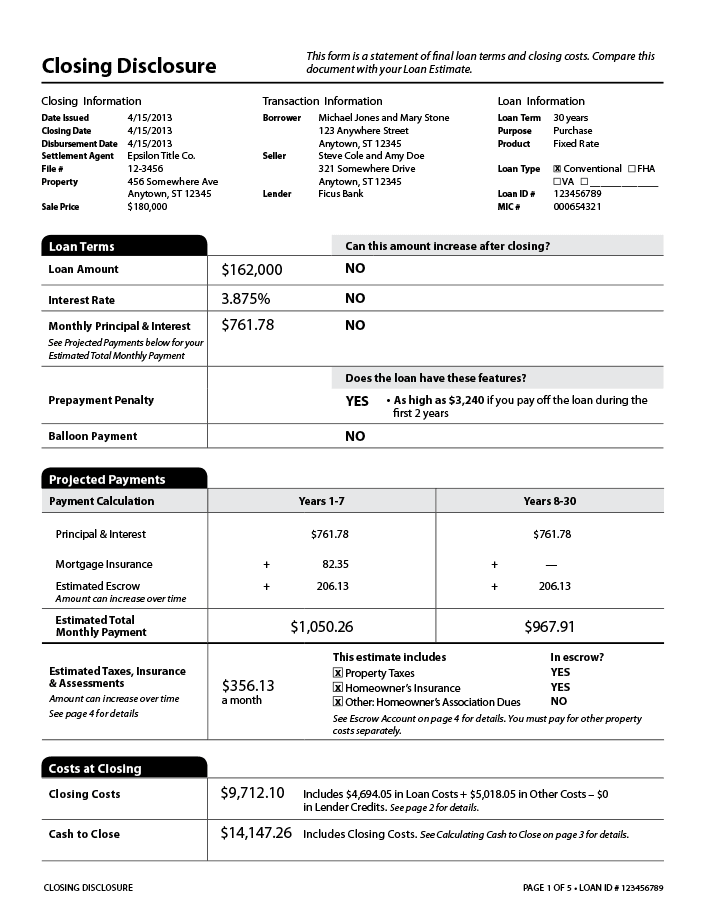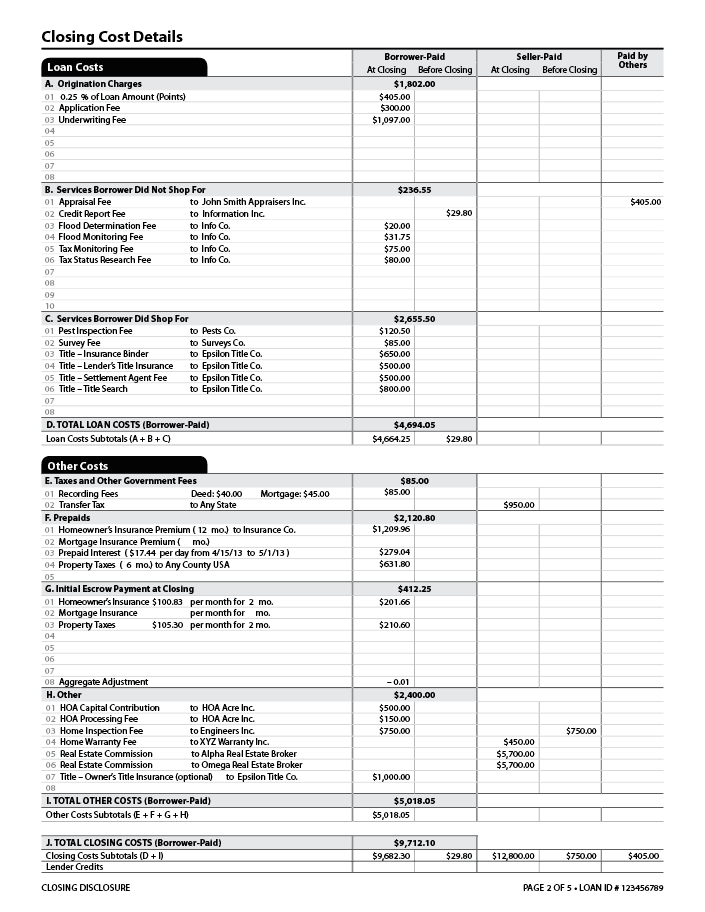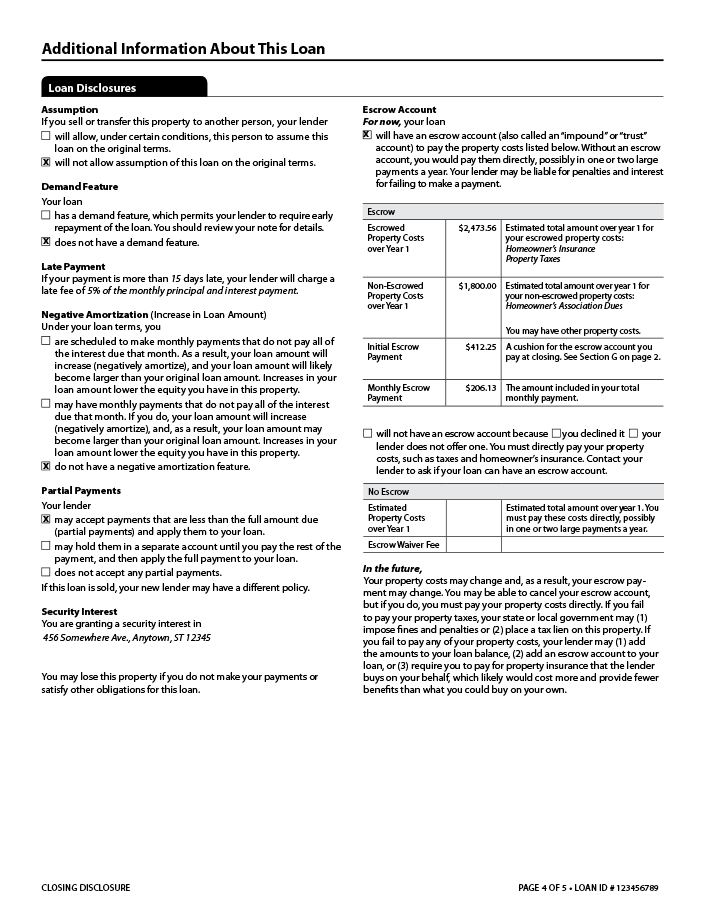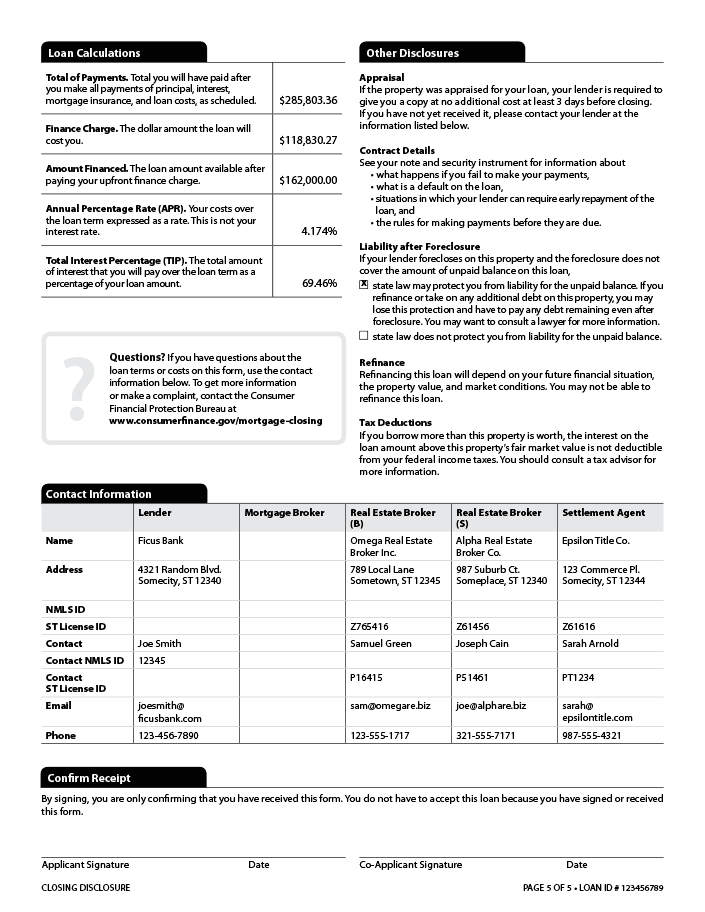Closing Disclosure Explainer
Use this tool to double-check that all the details about your loan are correct on your Closing Disclosure. Lenders are required to provide your Closing Disclosure three business days before your scheduled closing. Use these days wisely—now is the time to resolve problems. If something looks different from what you expected, ask why.
How to use this tool to review your Closing Disclosure: Below you'll see the actions you should take to review your Closing Disclosure and some handy definitions to know when you do.
The sample Closing Disclosure shows you where you'll find information on your own form. When you select any of the Closing Disclosure, the tool highlights this information on the image and also highlights the explanation. You can download the sample Closing Disclosure if you'd like to print it or just get a better look.
Sample Closing Disclosure
 Check the spelling of your name
Check that loan term, purpose, product, and loan type match your most recent Loan Estimate
Check that the loan amount matches your most recent Loan Estimate
Check your interest rate
Does your loan have a prepayment penalty?
Does your loan have a balloon payment?
Check that your Estimated Total Monthly Payment matches your most recent Loan Estimate
Check to see if you have items in Estimated Taxes, Insurance & Assessments that are not in escrow
Check that your Closing Costs match your most recent Loan Estimate
Check that your Cash to Close matches your most recent Loan Estimate
Monthly Principal & Interest
Principal & Interest
Mortgage Insurance
Estimated Escrow
Check the spelling of your name
Check that loan term, purpose, product, and loan type match your most recent Loan Estimate
Check that the loan amount matches your most recent Loan Estimate
Check your interest rate
Does your loan have a prepayment penalty?
Does your loan have a balloon payment?
Check that your Estimated Total Monthly Payment matches your most recent Loan Estimate
Check to see if you have items in Estimated Taxes, Insurance & Assessments that are not in escrow
Check that your Closing Costs match your most recent Loan Estimate
Check that your Cash to Close matches your most recent Loan Estimate
Monthly Principal & Interest
Principal & Interest
Mortgage Insurance
Estimated Escrow
 Check that “Services Borrower Did Not Shop For” are similar to what was shown on your Loan Estimate
Check that prices in “Services Borrower Did Shop For” match what you agreed to pay
Borrower-Paid
Origination Charges
Points
Taxes and Other Government Fees
Prepaids
Initial Escrow Payment at Closing
Other
Total Closing Costs
Lender Credits
Check that “Services Borrower Did Not Shop For” are similar to what was shown on your Loan Estimate
Check that prices in “Services Borrower Did Shop For” match what you agreed to pay
Borrower-Paid
Origination Charges
Points
Taxes and Other Government Fees
Prepaids
Initial Escrow Payment at Closing
Other
Total Closing Costs
Lender Credits



